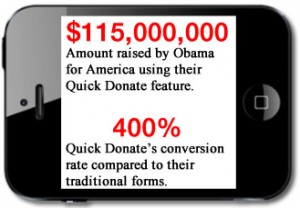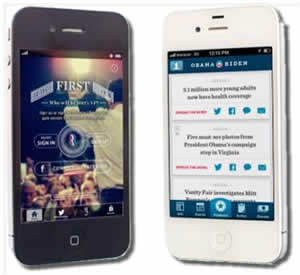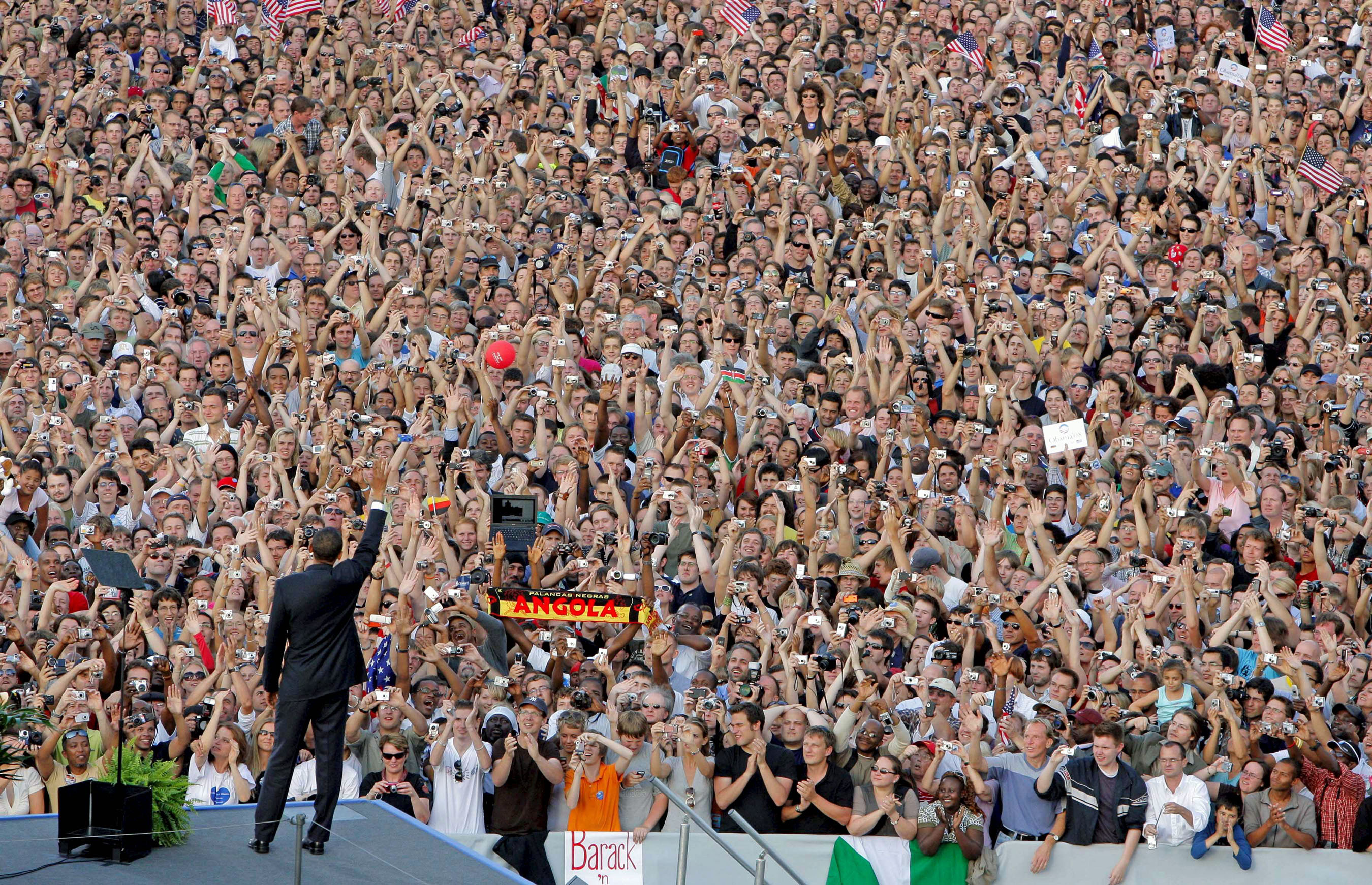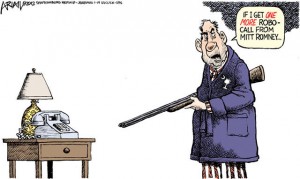Please Note: This is the second of a three-part series analyzing the full spectrum of mobile tools used by both presidential campaigns.
In Part 2, we will review how both campaigns leveraged mobile advertising and fundraising.
Mobile Advertising:
Spending on mobile phone advertising is exploding. Industry spent more than $1.8 billion on mobile ads in 2011. A year later that number grew to $5 billion worldwide.
Like their desktop brethren, mobile advertising provides exceptional targeting capabilities. In 2012, Google’s AdWords platform allowed campaigns to even target by congressional district. Most platforms offered geo-fencing – which limits ads to a set radius, and geo-targeting by zip codes. Both campaigns took notice.
Obama used mobile video ads in Spanish to target Latino voters. His campaign placed ads on mobile games such as Scrabble, Tetris and many others. And smart use of mobile advertising helped the campaign reverse their funk after the first debate. We also found that fundraising tied to mobile advertising campaigns generate 60% more donations than their desktop equivalents.
Romney’s mobile advertising habits began at the Iowa Caucus and New Hampshire primaries. His campaign spent more on mobile ads appeared on Facebook, Apple’s iAD platform and Google’s AdMob. And they effectively leveraged it to boost app downloads and recruit volunteers using click-to-call to connect them with the nearest campaign office. Their biggest mistake though was that they did not increase their mobile budgets to maintain their lead coming out of the first debate.
Mobile Fundraising:
Money drives campaigns, and 2012 proved to be the most expensive presidential campaign ever: both campaigns raise a combined total of $2 billion. Mobile had a significant impact both campaigns fundraising efforts.
Obama raises over billion dollars ($726M directly) of which 55% came from small donors – those who gave less than $200 during the election cycle. One in ten of their online donations came from mobile. The campaign experimented with using Square for smartphone credit card processing and Text2Give for impulse donations with little success.

Their Quick Donate feature proved to be one of their most effective tools. Past donors who saved their credit card information and provided a mobile phone number received simple donation requests via SMS. The donor would simply have to reply the number, such as 50, and in the system would process a $50 donation from them. This tool was timed to key events to maximize the effect.
The Romney campaign was less successful in this realm. While they released over 5,000 Square readers at the national convention, the program results whenever released – a sure sign of a campaign disappointment. While the campaign raised $992 million ($467 million directly), less than 24% came from small donors. When users clicked donate on the Romney mobile app, they were routed to mobile site instead of processing the donation within the app.
Takeaways:
Since mobile advertising is often directly tied to fundraising, both campaigns provided us with a few lessons:
- Do your best to remove all barriers: Obama was Quick Donate feature did not require filling out a lengthy form on a smartphone to donate, and drove impulse donations.
- Technology without strategy typically fails: Both campaigns used Square and Text2Give without a full understanding of how best they could be applied, and their efforts proved disappointing.
- Mobile is scalable: After the first debates, Obama ramped up his mobile efforts when they proved effective and he needed it most while Romney maintained spending levels regardless of whether he was ahead or behind.
In Part 3, we will review how both campaigns used mobile apps and messaging.
Please Note: This is the first of a three-part series analyzing the full spectrum of mobile tools used by both presidential campaigns.

Now that Americans inaugurated President Obama, it’s a good time to review how both campaigns leveraged mobile tools. While nearly all campaigns lack the financial and staff of presidential races, there is much that you can gleam from their efforts that can be affordable applied to yours.
Engaging voters via mobile requires more than just creating an app or slapping a QR code on a lawn sign. Both Obama and Romney pushed the capabilities of mobile with many successes and failures to fundraise, engage and GOTV:
Mobile Web:
These two facts that should make you pause: over half of Americans use a smartphone and 28 percent use their mobile phone as their primary means of accessing the internet. Having a mobile-optimized website is no longer an option for campaigns. Mobile sites act as the hub that drives action to and from multiple channels including email, social media, SMS and even search.
Both campaigns understood this fact, but they took different design approaches: Obama’s site was mobile responsive and Romney created a separate mobile site. Each site had strengths and weaknesses for both action- and information-oriented visitors.
Obama followed the mobile-first approach—one most recommended by designers. Unfortunately, that was the end of their smart thinking. While it’s critical to ensure that mobile users have access to the same information as desktop users, you need to balance site speed with content parity and navigation or you’ll lose visitors. This is the big failure of their site. They shoe-horned all of the content from the home page into a massive single, 15,770 pixel long, 4.2MB page. It took a minimum of 30 seconds to download. This is deadly considering that over 74% of mobile users, especially those action-oriented, won’t wait more than 5 seconds for a site to load.
Team Romney created a dedicated mobile site that loaded quickly, but it did so at the expense of content. It contained a fraction of what was on the desktop sites. Mobile users also could not route to the desktop site to go deeper on a topic. Worse, the many channels the campaigned used to drive traffic to the desktop site didn’t appear on their mobile site. While both sites are filled with opportunities for action-oriented visitors, this one has a better chance of converting visitors.
Takeaways:
Since most political campaigns sites are not content heavy, it’s in your best interests to provide a separate mobile site with these three caveats:
- You don’t update your site daily. While cross-posting new content on a mobile site is just an extra step, it can add a significant amount of time as you post more.
- You have the technical competence needed internally. Thanks to easy-to-use content management systems (CMS) like WordPress, updating a site is far easier today, but you still need to have the capacity to do so.
- You treat forms differently from each version. Mobile users are less likely to fill out more than 3-4 fields. So adjust forms accordingly when you can (while following FEC regulations).
In Part 2, we will review how both campaigns leveraged mobile advertising and fundraising.
I just checked election day countdown. There’s 18 days and 22 hours left for the polls close in Minnesota. If you’re months deep into managing a campaign, you’ve already transitioned your focus from fundraising to staging for getting out the vote.
For those of us who live outside of the world politics and campaigns, we also notice the increase use of a particular and very unwelcomed interruption: those dreaded robocalls. This tool is one of the markers of a poorly run campaign.
So why do both issue and candidate campaigns use them?
- They’re cheap: After burning through millions of dollars and lawn signs, television ads and other high-priced tools, robo-calls seem like a bargain. At $.03-$.05 per call, campaigns can reach thousands of potential voters for the cost of one midmarket TV spot.
- They’re labor free: Campaign staff spend tremendous amounts of time recruiting volunteers to make phone calls to win over thousands of swing voters. Robocalls can be set up in a matter of just a few hours of staff time.
- They can leverage celebrity endorsements: The social psychology thinking goes something like this, let’s get a well-loved celebrity, like Morgan Freeman, to record the message. Since Mr. Freeman is well known and regarded, people will welcome message from him.
- They’re habit forming: Campaign managers are creatures of habit. The logic goes that robocalls were likely used in prior campaigns where they volunteered, and then staffed, and then ran on their own. The first time someone smokes a cigarette, they are unlikely to get addicted. But after that second third or fourth cancer stick, they’re more likely to become smoker.
Too many campaign managers are addicted to robocalls, and they’ve become a cancer within the industry. So why should they kicked the habit?
- They don’t work: Numerous scientific studies over the last decade have shown that robocalls contribute zero impact when used as a get out the vote (GOTV) tool.
- People screen calls: In the days before caller ID, answering the phone was a crapshoot. Today, unrecognized phone numbers rarely break through a person’s screening.
- They irritate supporters: And if campaigns have to use the recognized number counter call screening, they risk doing little more than irking the people who support them financially and volunteer their time.
- They can be illegal: If a campaign robocalls a mobile phone without prior consent, they could be hit with a $16,000 fine per instance by the FCC.
SMS is a better alternative to robocalls. An effective GOTV campaign will win any close race. Your core supporters are more likely to opt-in text messaging, especially millennial voters, because they’re less intrusive. Here’s a few ways they can use text messaging to get out the vote:
- Offer to send a reminder to vote: While presidential election cycles see greater turnout, a simple reminder on Election Day can have a great impact in primary and midterm races.
- Asking supporters to forward messages: Thankfully, forwarding a robocalls is pretty tough to do. Asking supporter to forward text message to remind their friends about registering to vote, applying for an absence a ballot or simply asked them if they voted is relatively painless. And it also comes from someone they know.
- Asking for help: The people who opt into your mobile list are more likely to be your strongest supporters. So why not ask them to volunteer? Campaigns can send out a quick message about volunteer opportunities on Election Day. It’s likely to be more efficient than having volunteers call other potential volunteers.
In time, text messaging and other mobile tools might find kick the robocall addiction. Until then, the best we can do is to screen our calls. If you’d like to do more to end the scourge of robocalls, check out this great program from the Citizens for Civil Discourse.



